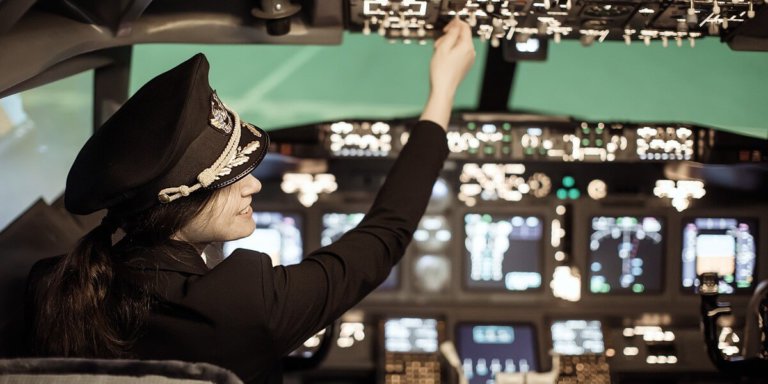
A recent study by Aer Lingus found that female representation in aviation, namely the pilot profession, is severely lacking.
According to The Irish Times, “The Red C Survey, which was carried out with 500 adults aged 18-30 from across Ireland, found only a third of women were encouraged to follow a Stem (science, technology, engineering or maths) career while at school compared with half of men the same age.
“And it said this was contributing to the relatively low number of women applying for Aer Lingus’s pilot training programme.”
The survey also found that pursuing a career as a pilot was discussed more significantly in boys’ schools compared to girls’ schools, as only eight percent of females talk to their guidance counselor about becoming a pilot.
While six percent of men said they had considered becoming a pilot, just three percent of women had considered the same thing.
Last year only 7 percent of applications to our Future Pilot Programme were made by females. Let’s move the dial on this.
— Aer Lingus (@AerLingus) June 26, 2019
The problem is not limited to Ireland. Forbes reported last year that just over five percent of pilots worldwide are female. To put this into perspective, out of twenty flights you take, only one will have been flown by a female pilot.
According to the Center of Aviation, “Data for the US and the UK indicate that just over 4% of airline pilots are women. This share is growing, but very slowly. According to the International Society of Women Airline Pilots, the US big three airlines have the highest number of women pilots and the Indian LCC IndiGo has the highest proportion (13.9%)”
At a time when most young women around the world are not held back from pursuing their professions of choice, why is female interest in aviation so low?
While this is related to the low rate of female representation in STEM fields overall, the Irish Times notes that there are also other factors potentially contributing to the lack of interest.
“Nearly 80 per cent of women said there were not enough female pilots in the profession compared with just 45 per cent of male respondents, while one-third of women said the role was “not female friendly”. Only one in three of all adults surveyed believed being a pilot would allow for a good work balance.”
So what can be done to encourage more girls to become pilots?
Aer Lingus Director of Operations and former pilot Davina Pratt said the findings show that airlines must make more of an effort to visit schools.
This will help promote flying as a valid career for women because currently, it isn’t actively done so.
“Myths around the work-life balance of a pilot, maths and Stem qualifications and funding for pilot training should also be addressed,” she adds.
First female pilot👩✈️
Meet Yasmeen Al Maimani, A 29-year-old Saudi Arabian woman has become the first female first officer to fly a mainstream commercial plane in the kingdom. She piloted Nesma Airlines flight ATR72 from Hail to Al Qasim on June 9, 2019.
Via Mamaj Aviation pic.twitter.com/GxfzHe7qUb— Danyal Gilani (@DanyalGilani) June 26, 2019
The ‘Woman can Fly’ organisation, established to motivate females in aviation, holds events across the state of Virginia to promote aviation careers to females of all ages.
According to the Fauquier, “Introducing aviation to girls and women of all ages, the events across the state will provide a variety of enjoyable and educational experiences, including aircraft static displays, tours of airport facilities and aviation museums, and a flight in a general aviation aircraft.
“By providing information with hands-on experiences and demonstrating the sheer fun of flight, the goal is to encourage participants to fly recreationally, become a private pilot, or to become a private pilot, or pursue a career in aviation.
“Representatives from the airlines, military, business and recreational aviation will be invited to showcase aviation’s diverse field for career opportunities.”
CAE (formerly known as Canadian Aviation Electronics), offers up to five full scholarships for a cadet pilot training course to women.
The CAE Women in Flight programme was designed to encourage women to become professional pilots.
Schools can also play a role by organising special events or inviting female pilots to speak at schools, encouraging and inspiring more female students to pursue careers in this area.







